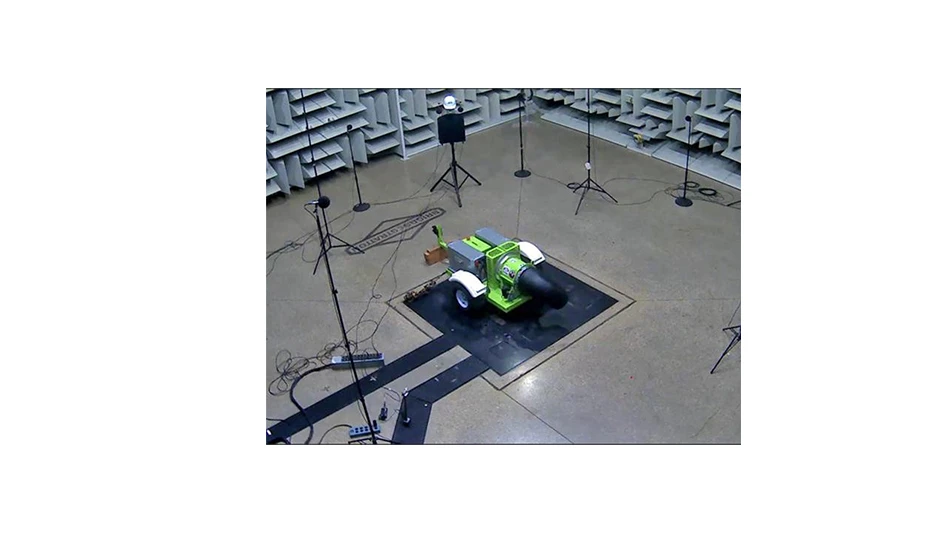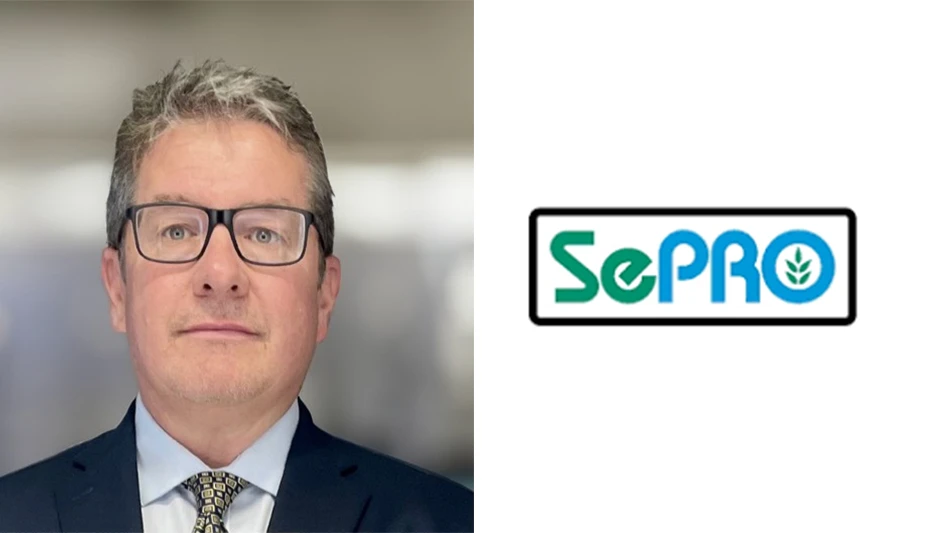 We learned in high school biology that water is composed of two things: hydrogen and oxygen. Ah, life was so simple then, right? Once we got into the real world, we learned there can be oh so much more in our H2O.
We learned in high school biology that water is composed of two things: hydrogen and oxygen. Ah, life was so simple then, right? Once we got into the real world, we learned there can be oh so much more in our H2O.
As a golf course superintendent, it’s important for you to know what’s in your water so you can keep your turfgrass healthy.
According to Paul Roche, national sales manager – golf division for Rain Bird, the water source for more than 50 percent of the golf courses in the U.S. is on-site or nearby ponds or lakes. Of the remaining courses, more than 20 percent get their water from streams, rivers, creeks and canals, and another 14 percent use reclaimed/reuse/recycled water. The balance of the golf courses gets their water from municipal supplies (potable drinking water) or wells.
“Because of such a wide variety of water sources with much variability due to upstream impacts, golf course irrigation water can be quite variable,” says Rain Bird’s Roche.
That’s why golf course superintendents should test their water frequently. So what are some elements that, if found in water, could be bad news for your turf?
Boron, for one. According to Larry Lennert, North Central territory manager for Aquatrols, boron can be toxic to some turfgrass species at concentrations as low as 2 to 4 ppm in the soil. Irrigation water should contain less than 1 ppm.
“Boron can be leached from sandy soils, but it accumulates and is more difficult to leach from fine-textured soils,” Lennert says. “Also, it is more commonly a problem in landscape plants than in mowed turf.”
Chlorine is usually only present in minor amounts in recycled water sources where chlorine-containing compounds are commonly used as a disinfectant. Residual chlorine levels above 5 mg/L can be toxic to turfgrass. Also, chlorine is generally unstable in water and will form chlorides – different than chlorine.
“Chloride is an anion (or negatively charged ion) commonly found in irrigation water and can be a major contributor to the overall salinity of water,” Lennert says. “Chloride is not particularly toxic to turfgrass, but many landscape plants are very sensitive to it.”
Carbonate and bicarbonate are interesting, too. They are anions in alkaline irrigation water that commonly react with calcium cations (positively charged ions) in higher pH soils and precipitate out as calcium carbonate, also known as calcite or free lime.
“Less commonly, magnesium cations can also precipitate out of alkaline irrigation water or the soil solution in higher pH soils to form magnesium carbonate (MgCO3),” says Lennert. “Either of these events will elevate the sodium absorption ratio.”
 Rain Bird’s Roche explains that the sodium absorption ratio (SAR) indicates the amount of sodium in the water in relation with calcium and magnesium.
Rain Bird’s Roche explains that the sodium absorption ratio (SAR) indicates the amount of sodium in the water in relation with calcium and magnesium.
“There are different types of acid products that can be used to help manage waters that have a high SAR,” says Roche. “Acid products are typically injected at the pump station using proportional pumps that work in conjunction with the pump station’s flow meter so that a balanced amount of material is added to the irrigation water throughout an irrigation cycle at variable flow rates. In some areas of the country, a permit must be used to install acid injection equipment, and containment areas and backflow prevention devices must be in place to contain and prevent any spillage or leaks and to protect from back siphonage into the water source.”
So what about sodium, that common element found in water? High concentrations of it will increase the total salinity of the water. Salinity and organic components are two of the top issues with water, says Brian Whitlark, agronomist with the USGA Southwest Region.
“The warmer the weather, the more types of organisms you’ll find in water,” he says. “Bryozoa, protozoa and clam shells can be problematic in gumming up the screens at the base of sprinkler heads. If you don’t have a good filtration system at the pump station, you’ll be chasing around with heads that get stuck or don’t come on at all.”
|
Fill ’Er Up Believe it or not, there is a right and a wrong way to collect a water sample for testing – in case you were intending to dunk an empty tin can into your pond and call it a day. Larry Lennert, Aquatrols’ North Central territory manager, recommends taking the water directly out of the irrigation system. “I know some people pull it out of the wet well or pond, but I prefer to see the water go through the irrigation piping and collect it as it comes out of the head or a quick coupler somewhere on the course because that’s truly representative of what’s coming out of the irrigation system,” he says. “If you try to pull a sample next to the pond or out of the wet well, that might not give you the same properties as the water pulled from the bottom of the pond or sitting stagnant in a wet well.” The USGA’s Brian Whitlark agrees. “Take a sample from a quick coupler or sprinkler at the furthest point away from the pump station to see what’s actually going on the course.” But Whitlark says it’s important to also take samples from the source. “Sometimes water will come in and sit in the irrigation lake and evaporate, or it may pick up salt if it’s an unlined lake or may even pick up salt from concrete in the lake,” he says. “The bottom line is you need to know what’s sitting in your lake and what your source is. It could be that it’s picking up something in your irrigation line. Maybe there’s some precipitated calcium carbonate in there that the water’s picking up between the irrigation lake and the fifth hole. You don’t have to sample every single time you go out, but it’s at least initially important to do that.” Whitlark recommends that superintendents new to a course sample every month because the quality of reclaimed water can change throughout a season. Lennert recommends refrigerating the sample right away and shipping it overnight to a lab. You can even freeze it as long as you leave enough room in the bottle for the water to expand. “The reason you want to put the water in a refrigerator or freeze it is to cut back on microbial activity,” Lennert says. “Once bacteria in there starts doing their thing and creating a chemical reaction, it can change some of the readings in the water.” If you’re just submitting the water for chemical analysis to figure out if there is nitrogen, phosphorus, bicarbonates, sodium, chloride, etc., in it, then it’s not necessary to refrigerate the sample. As far as containers go, most people select a 16- or 20-ounce water bottle that has been rinsed out and dried. “Don’t use anything metal or aluminum, just a plastic bottle that had nothing other than water in it before,” advises USGA’s Whitlark. “And when you go down to the irrigation lake, triple rinse that bottle with the source of water you plan to submit for analysis.” |
Whitlark relates the story of one superintendent he ran into at a meeting who showed him a photo of his pump station filled with bryozoa. Despite the fact that it was a self-flushing system, they had to mechanically remove the filters and clean them off every three weeks; otherwise, they were pumping at reduced efficiency, which, of course, costs energy. This was a new pump station, too – prior to acquiring it, the mess was living in his irrigation lines.
Treating those types of organisms can be dangerous, Whitlark says. Potassium permanganate is the most popular, followed by hydrogen peroxide or some sort of oxidation strategy (even ozone) to kill the organic organisms in an irrigation lake or wet well.
“These organisms are often associated with reclaimed water with elevated nutrient levels, specifically nitrogen and phosphorus,” Whitlark says.
Having nitrogen and phosphorus in your water can be helpful from the standpoint of providing, in some reclaimed water, up to four to five pounds of nitrogen per 1,000 square feet per year. But, during times of limited growth, supers run the risk of leaching those materials through the rootzone.
“In hot environments that are growing bentgrass greens, the nitrogen is a real concern,” says Whitlark. “You don’t want to be applying nitrogen in July and August when it’s 105 degrees and elevated humidity. The additional nitrogen is unwanted and creates puffy conditions on the greens.”
| For more ... Looking for more information on this topic? The USGA’s Brian Whitlark recommends the following resources. Simply enter the following URLs into your browser to access the online content.
|
Whitlark has seen courses where this is a great concern form conglomerates with other courses using the same reclaimed water and work with the water provider to implement reverse osmosis or additional denitrification strategies at the plant.
“Furthermore, the nitrogen and phosphorus in the water create a good environment for algae formation in the lakes, and regardless of how diligent superintendents are at avoiding putting fertilizer in the lakes, if those nutrients are coming from the effluent plant, that can be a real issue,” says Whitlark.
When it comes to salinity, you’re trying to evaluate the water based on total salts and whether you have a sodium hazard – two different things, Whitlark points out.
“You could have high salts and sulfates and calcium magnesium that make the water salty, but the sodium is low, and that will determine whether you can treat the water or whether it’s beneficial to treat the water,” says Whitlark.
Water with high electrical conductivity (over 1) may start to cause problems if you have poorly drained soil. Whitlark warns that, outside of reverse osmosis, you cannot reduce the salts in water. But as far as reducing the sodium hazard, if you have a sodium absorption ratio equal to or greater than 5, you might consider treating the water with gypsum to increase calcium. If the water is high in carbonates and bicarbonates, and the residual sodium carbonate (sum of carbs and bicarbs minus the sum of calcium magnesium) is greater than 1.5, then the potential exists to cause precipitation of calcium and magnesium – which would render sodium more potentially destructive in the soil.
Jason Stahl is a Cleveland-based writer and frequent GCI contributor.
Hear it first...
Check out this podcast featured on GCI’s Superintendent Radio Network which features Larry Lennert, territory manager for Aquatrols, who discusses soil salinity by outlining management practices. To listen, simply enter bit.ly/JHHUir into your browser.
For more online...
Looking for more information on water quality issues? Check out the following USGA Green Section articles by entering the following URLs into your browser.
- Phosphorus Remediation
Improving water quality with phosphorus removal structures.
By Chad Penn, Greg Bell, Jason Warren, and Josh McGrath
bit.ly/K677CM - Purple Gold
A contemporary view of recycled water irrigation.
By Dr. M. Ali Harivandi
bit.ly/1dw7m1R - Acid Substitutes and pH Reduction
An evaluation of the new acid-replacement products for improving water quality and the soil rootzone environment.
By Brian Whitlark
bit.ly/K6auK4

Explore the January 2014 Issue
Check out more from this issue and find your next story to read.
Latest from Golf Course Industry
- Bloom Golf Partners adds HR expert
- Seeking sustainability in Vietnam
- Kerns featured in Envu root diseases webinar
- Toro continues support of National Mayor’s Challenge for Water Conservation
- A different kind of long distance
- Golf Construction Conversations: Stephen Hope
- EnP welcomes new sales manager
- DLF opening centers in Oregon, Ontario







